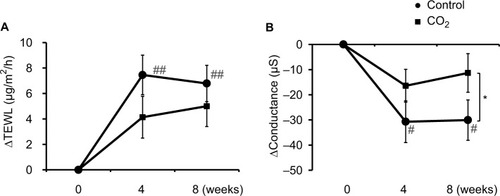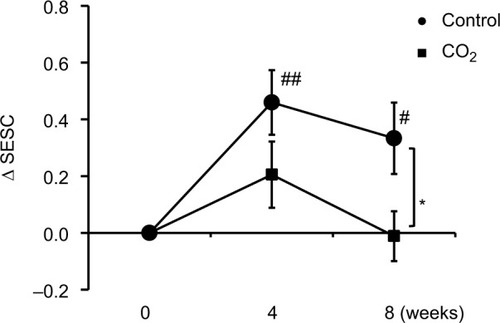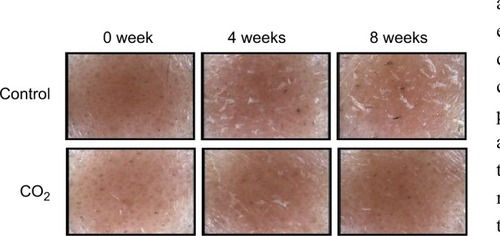Figures & data
Figure 1 Changes in epidermal function with CO2 application.
Abbreviation: TEWL, transepidermal water loss.

Table 1 Parameters of epidermal function at each time point
Figure 2 Changes in skin surface profile with CO2 application.
Abbreviation: SESC, skin scaliness.

Table 2 Parameters of the skin surface profile and property at each time point

